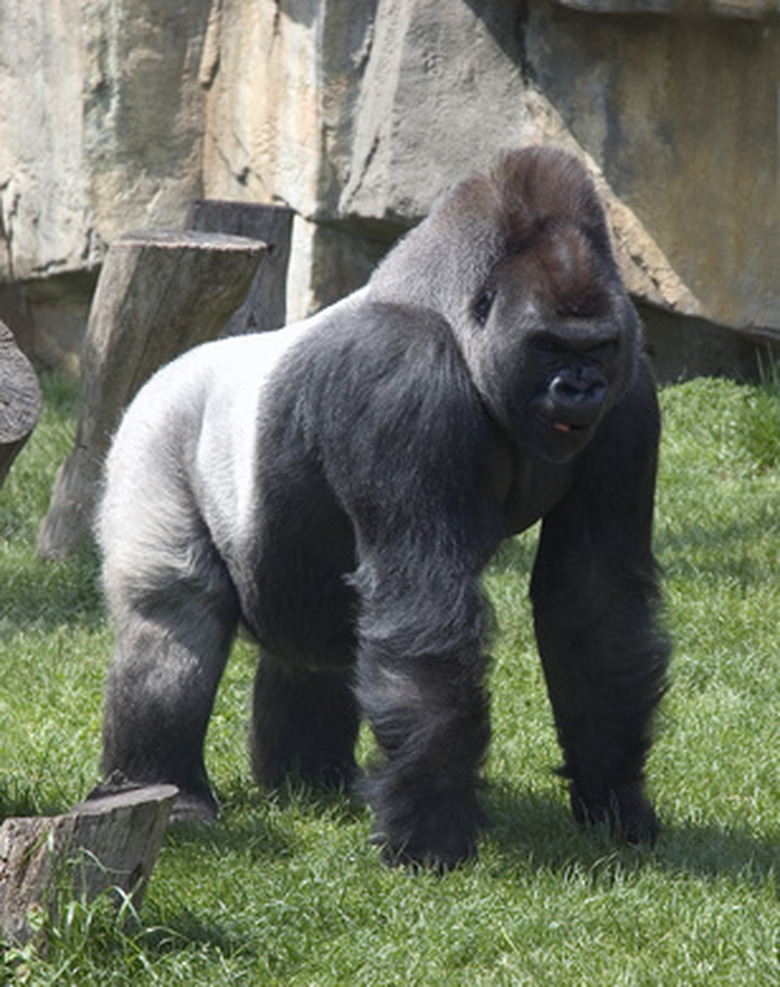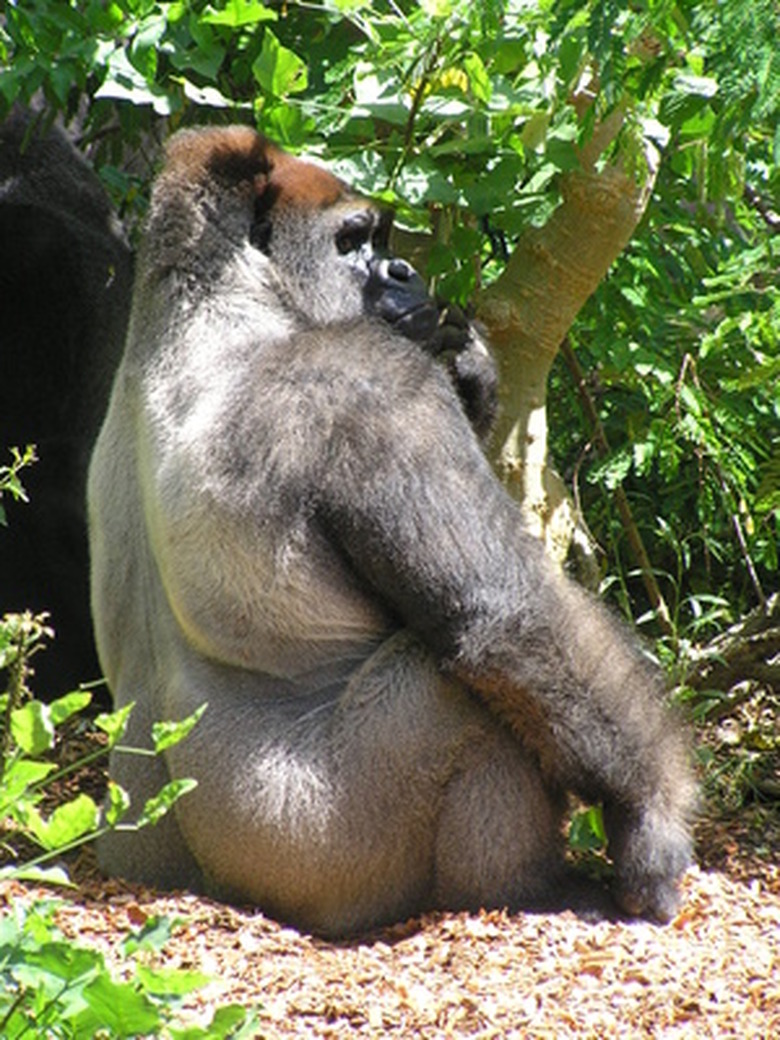Facts About Silverback Gorillas
Gorillas belong to the ape family, which includes orangutans, gibbons and chimpanzees. There are two species of gorillas: Gorilla gorilla, the lowland species, and Gorilla beringei, the mountain species. There are also eastern and western subspecies determined by populations that are isolated due to geography where they are separated by rivers or mountains. The term "silverback" doesn't refer to a species of gorilla. Older male gorillas are called silverbacks because they develop grayish white hair on their shoulders and backs as they age.
Males and Females
Males and Females
Gorillas are the largest apes. Gorilla species are sexually dimorphic, meaning there is a significant difference in size between adult males and females. Adult females weigh about 200 pounds and average around 4 feet tall. Male gorillas are much larger than females, weighing about 400 pounds and growing to 6 feet tall. Males have larger heads than females, due to a crest, or ridge on their skull that serves as an anchor where large jaw muscles attach. Sexual dimorphism is a key piece of gorilla information that helps you understand why only some become silverbacks.
Silverback Gorilla Facts
Silverback Gorilla Facts
Only male gorillas become a silverback. Male gorillas are considered mature adults at eight years old, although they are not yet fully grown. They continue to grow and have black hair for the next four years. During this time, they may leave their troops and live alone or join a group of other males of similar age. Male gorillas become silverbacks around the age of 13, when the hair across their shoulders and down their back becomes grayish or white in color. Generally, only silverback males become the leader of a troop.
Lowland Gorillas
Lowland Gorillas
Part of the silverback gorilla habitat includes portions of central and western Africa near the equator. The Lowland gorillas live in the forests of the Congo river basin, at elevations ranging from sea level to about 5000 feet. They experience one rainy season and one dry season per year. Their diet is plant-based, consisting of leaves, shoots and fruit. They also eat insects, especially ants and termites. Lowland gorillas tend to have a wider home range than mountain gorillas as they seek out sources of fruit for their diet.
Mountain Gorillas
Mountain Gorillas
Mountain gorillas live in the forests of the Virunga Mountains at elevations around 7000 to 13,000 feet. These gorillas are folivores, meaning their diet is based mainly on leaves and stems. They supplement their diet with bark, flowers, roots, fungi and some insects. The mountain gorillas' range has two dry seasons and two rainy seasons per year. Weather in their range is generally cooler and rainier than the lowland gorilla range.
Gorilla Social Structure
Gorillas are social animals that live together in troops. Troop size ranges from as few as five to more than 30 individuals, depending on species, available resources and reproductive success. There is only one silverback male per troop but a few younger adult males may be part of the troop or live on the fringes of a troop. Females, juveniles and infants comprise the rest of the troop's population. The silverback ape acts as the troop's leader. He defines the troop's territory and has breeding rights to any adult females in the troop. He also determines aspects the troop's routine, such as feeding times, diet and sleeping times. Although not generally aggressive, a silverback male will display aggressive behavior toward other males, especially those of another troop.
Cite This Article
MLA
Mentzer, A.P.. "Facts About Silverback Gorillas" sciencing.com, https://www.sciencing.com/silverback-gorillas-6361263/. 22 November 2019.
APA
Mentzer, A.P.. (2019, November 22). Facts About Silverback Gorillas. sciencing.com. Retrieved from https://www.sciencing.com/silverback-gorillas-6361263/
Chicago
Mentzer, A.P.. Facts About Silverback Gorillas last modified March 24, 2022. https://www.sciencing.com/silverback-gorillas-6361263/




